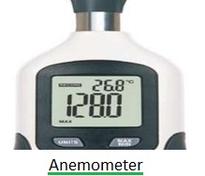Understanding ESD Ionizers and Their Role in ESD Control
Advertisement
This article explains the basics of ESD Ionizers and their types, covering the fundamental working principles of an ESD control ionizer and its benefits.
As you probably know, electrostatic discharge (ESD) is a major cause of electronic component failure, accounting for about 28% of all failures. To combat this, various methods are employed to control ESD-related damage. One such method involves using ionizers. These are particularly effective in safeguarding even the most sensitive Class 0 components.
Electrostatic Discharge (ESD) ionizers are essential devices used in electronics manufacturing, cleanrooms, and laboratories to neutralize static charges and prevent electrostatic damage. They help maintain a controlled environment by balancing positive and negative ions in the air.
Ionizers are primarily used to neutralize unwanted static charges on ESD sensitive components and insulators within an ESD Protected Area (EPA). They come in several forms, including:
- Desktop Fan Type
- Horizontal mount fan placed on table top
- Advanced ionizers with feedback provision
Working of an ESD Control Ionizer
 ESD control ionizer
ESD control ionizer
The image above illustrates an ionizer directing its stream of ions toward an area where charge neutralization is needed. Some advanced ionizers use feedback sensors for more precise control. Let’s break down how an ESD control ionizer works:
- A transformer is connected to an AC power supply. (For DC ionizers, separate power sources generate positive and negative voltages.)
- The transformer amplifies the charges, which are then applied to a metal mesh, charging it up.
- A fan then propels these charged ions towards the EPA.
Selecting the Right ESD Ionizer for Your Needs
Choosing the correct ESD control ionizer depends on several factors:
- Type of ionizer: Consider whether you need an AC ionizer, pulsed DC ionizer, or a steady-state DC ionizer.
- ESD Sensitivity Class: What class of ESD-sensitive components will you be handling?
- Coverage Area: How large an area needs protection? This will help you decide between a desktop fan type ionizer or a curtain-type ceiling mount ionizer.
- Alarm/Data Logging: Do you need an alarm system or continuous data logging capabilities?
- Modularity: Opt for a modular design for ease of maintenance.
- EM Compatibility: Ensure the ionizer doesn’t interfere with nearby electromagnetic (EM) radiating equipment.
Benefits of ESD Ionizers
Following are some of the advantages of ESD Ionizers.
- Neutralizes static charges on surfaces and components, reducing the risk of damage to sensitive electronic devices.
- Enhances Product Reliability and Quality by protecting semiconductor chips, circuit boards and other electronics from ESD related failures. This improves product lifespan and performance.
- Improves Yield in Electronics Manufacturing Reduces defective units caused by static discharge, increasing production efficiency and cost savings.
- Provides Static Control in Cleanrooms which is essential for environments where static electricity can attract contaminants. This ensures the cleanliness of sensitive manufacturing areas.
- It protects personnel working with high precision equipment from static shocks.
- Useful in workspaces where direct grounding methods, such as wrist straps and grounding mats, are impractical or insufficient.
- Minimizes the risk of sparks caused by static discharge, reducing fire and explosion hazards in environments with volatile substances.
- Comes in various types, including overhead ionizers, bench top ionizers, and hand held models, to suit different applications.
- Works for a Wide Range of Industries including electronics, medical device manufacturing, aerospace, pharmaceuticals and other industries requiring static control.
- Prevents static buildup that can interfere with the operation of robotic arms and automated assembly lines.
Conclusion
ESD ionizers play a crucial role in preventing electrostatic damage, ensuring product quality, and maintaining a safe working environment in industries where static electricity is a concern. By effectively neutralizing charges in areas where grounding methods are limited, they help reduce defects, improve production efficiency, and protect both equipment and personnel. As technology advances, the demand for reliable ESD protection continues to grow, making ESD ionizers an essential tool in modern manufacturing and research environments.
Advertisement
 T&M
T&M 







